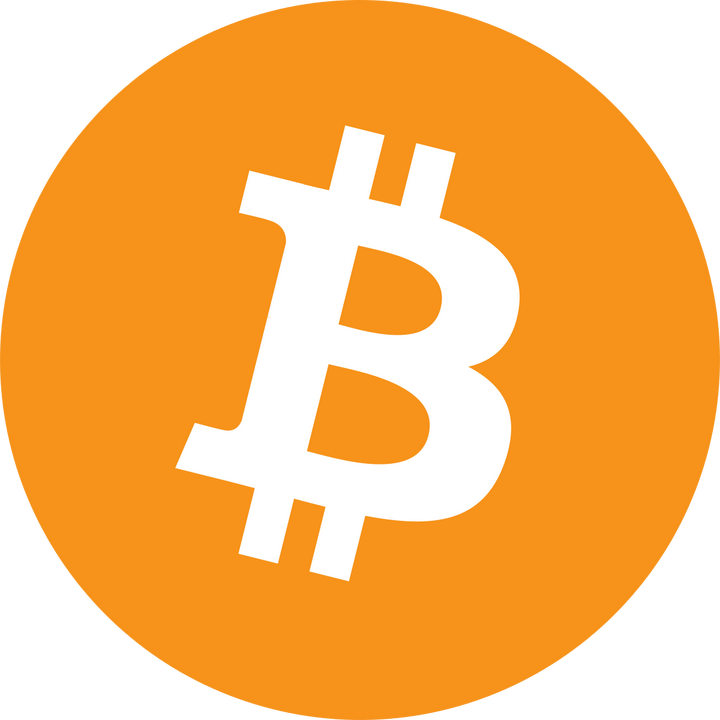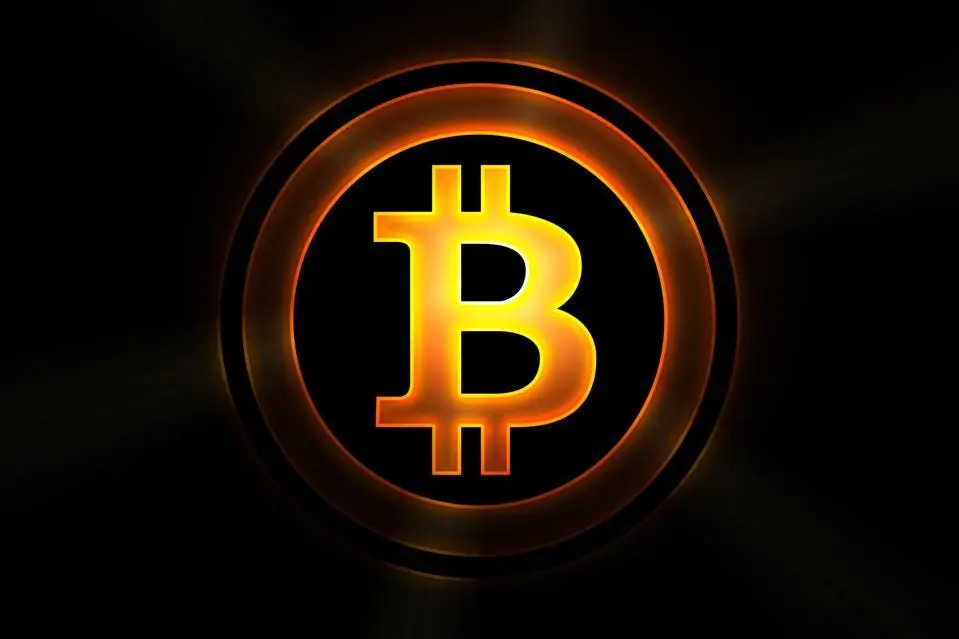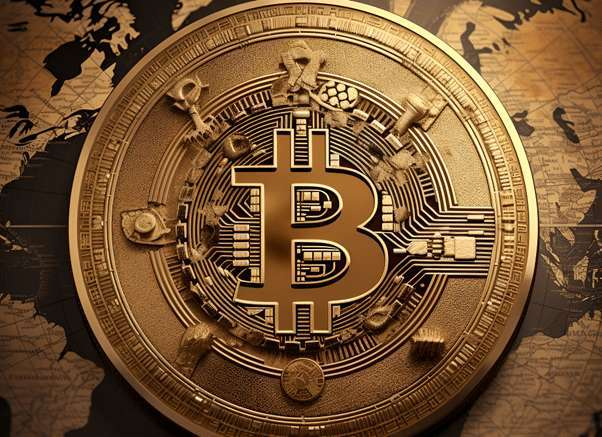Whose cake did NFT steal?
For every minute you get angry, you lose sixty seconds of happiness.
—Ralph Waldo Emerson
In late January, Dan Olson (aka Folding Ideas), one of my favorite internet content producers, released a video titled “Line Goes Up” outlining his complaints about NFTs (non-fungible tokens). As I write this, the video has amassed over 6 million views - nearly double the views of Dan Olson’s next most successful video. That’s an impressive number of views for a 2.5-hour documentary with little marketing.
In the video, Olson makes the following arguments:
Cryptocurrencies are useless other than to sell to dumber people.
NFTs, DAOs, and “play and earn” games are just tricks to find more fools.
The fools who buy them become accomplices of a marketing scam.
NFTs are ugly, centralized, meaningless, they exploit artists and destroy the environment.
Honestly, this video really blows my mind. It’s not because Olson doesn’t like NFTs - it’s perfectly acceptable not to like NFTs. It frustrates me because the subject of his previous videos resonated with me a lot. Olson described NFTs as “incomprehensibly tedious” and Crypto enthusiasts as “horrible people” with “poor judgment” and “low social literacy.” He called Ethereum founder Vitalik Buterin a “butthurt warlock” (glass mind). In short, NFTs pissed off Olson. And he’s not the only one who feels that way.
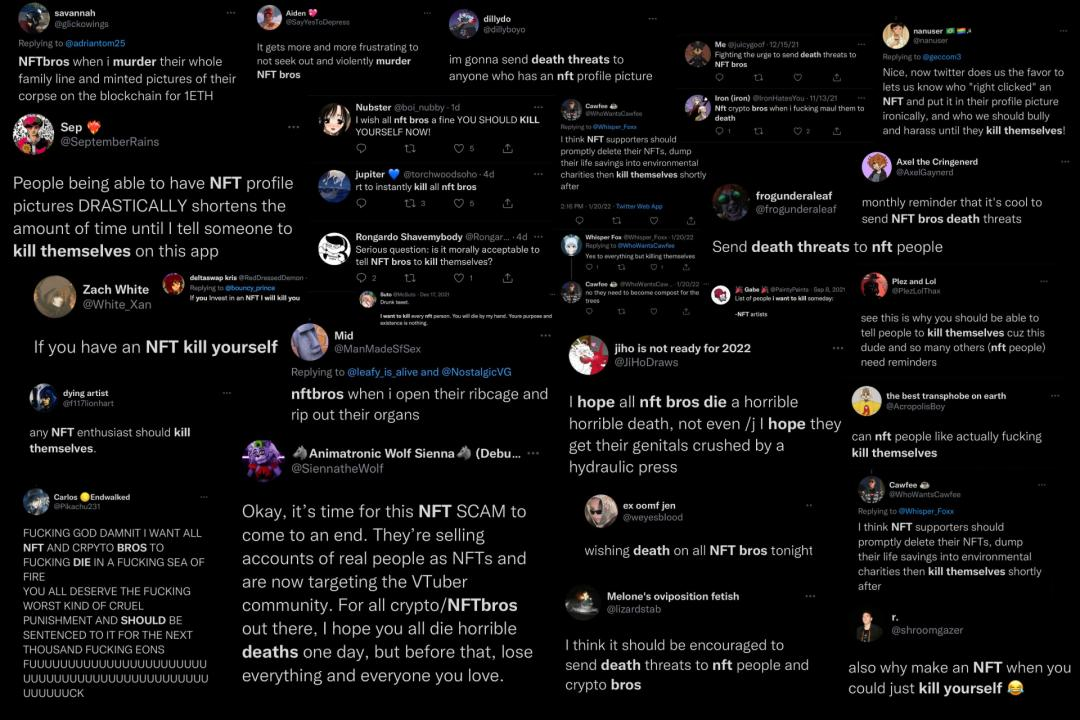
Source: https://twitter.com/SHL0MS/status/1486852585575301121?s=20&t=sM8io7-71yCftuaTsVDz0w
To clarify, I agree with many of Olson’s criticisms of the crypto space. This field attracts gamblers, liars and fools. Motivated reasoning and dishonest marketing are everywhere. I’m skeptical of DAOs myself, and I don’t find the current generation of P2E (play and earn) games attractive. Olson describes many examples of bad behavior in his videos, and for the most part, these are accurate descriptions—of course, there are many other similar examples that he could use to make the same point. The history of the crypto industry is indeed full of failed projects and public scams.
The problem is not that Olson’s examples are wrong, but that his conclusions are wrong. Some people misunderstand Crypto, but that doesn’t mean Crypto is useless. Some people use NFTs to create bad art, but that doesn’t mean NFTs are bad art. Explaining the value of NFTs by looking for the worst examples is like explaining the value of the Internet by listing the worst websites.
Olson sampled what he described as NFT projects by accepting random Discord spam invitations — roughly akin to assessing the average quality of a website by clicking on each spam link. It’s a stupid way to measure average quality, which itself is a stupid thing to do. The average quality of a website doesn’t mean anything and doesn’t matter — what matters is the quality of the websites you choose to interact with. The same goes for NFTs.
There is no so-called NFT art
A common complaint about NFTs is that they are ugly. In the “Line Goes Up” video, Olson described NFTs as “ugly,” “garish,” and “incredibly cringeworthy.” However, to anyone who knows NFTs, these criticisms are clearly meaningless. This is not only because art is subjective and no one has the right to think that a type of art has no value, but because NFTs are not a type of art at all. NFTs don’t look like anything. They can be associated with any visual effect, or none at all. NFTs are not an art style, but a tool that artists can use.
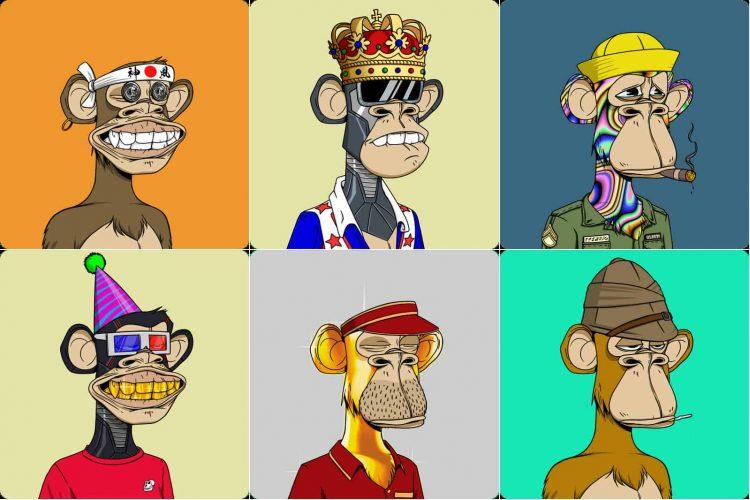
BAYC Boring Ape NFT
Currently, we have NFTs representing portrait photography, generative art, songs, virtual real estate, poetry, memes, rocks, video game props, financial contracts, sports, and more. If someone tells you that NFTs are bad, then he is telling you more about the limitations of his own imagination than the limitations of NFTs. It’s like someone who’s only seen Marvel movies confidently asserting that movies are inherently unrealistic.
NFTs are useful and that’s why people use them
Olson’s “Line Goes Up” video opens with a description of the 2008 mortgage crisis and how Bitcoin emerged from the crisis. His criticism of Bitcoin was unconvincing, but largely unrelated to his argument for NFTs. However, it is interesting to have a macro analysis of the arguments he makes about Bitcoin, as it is symbolic of how he has misunderstood NFTs. According to Olson, Bitcoin cannot solve any problems. He said:
“Cryptocurrency can’t solve 99% of the problems in banking because those problems are problems of human behavior, of motives, of social structures, of patterns. The problem is what people do to other people, not outside the building where they do it There’s the word ‘bank’.”
It’s true that Bitcoin won’t eliminate the excesses of banking or capitalism, but to be fair, I don’t know of any technology that does. The idea that Bitcoin is designed to eliminate banks is a bizarre, historically irrelevant straw man fallacy. Satoshi Nakamoto himself talked about how banks will use Bitcoin. The purpose of Bitcoin was never to solve every problem in the economy - it was to make it impossible to devalue wealth or to censor transactions. Reasonable people may disagree on whether these problems are worth solving, but Bitcoin does solve them.
Bitcoin may not be useful to Olson, but it is useful to Alexei Navalny (a prominent Russian opposition figure) and Putin’s political opponents. It could be useful for citizens of countries with troubled currencies such as Nigeria, Venezuela and Turkey, as well as ordinary people trying to flee Ukraine and Russia. It’s useful for feminist protesters in Africa because their governments strip them of bank accounts, and for women in Afghanistan, who aren’t allowed to have bank accounts at all. Olson called Bitcoin “the favorite of thousands of gambling addicts,” perhaps because he didn’t know that Coinbase alone has millions of active users around the world.
You don’t have to believe how good Bitcoin is or that anyone thinks it works. However, anyone claiming that Bitcoin is useless ignores the many ways it has been used. Olson’s indictment of NFTs also repeats this erroneous way of analyzing: Olson asks a question that he says NFTs were meant to solve, shows how the problem isn’t solved, and concludes that NFTs So useless - without researching why people are actually using NFTs.
NFTs are not meaningless, they are pointers
Olson argues that NFTs are pointless because they are not as useful as advertised. True, images referenced by NFTs may be lost or replaced. The same image can be minted into multiple NFTs, or minted into NFTs on multiple blockchains. The NFT does not prove that its mint is the artist who created the image, and the NFT does not prevent anyone else from accessing the image, even if they do not hold the NFT. Olson pointed out (correctly) that NFTs were not useful for proving the authenticity of art, then (wrongly) concluded that they were not useful at all.
NFTs cannot prove the authenticity of art, because authenticity is the subjective evaluation of the audience, not the quality of the art itself. Different people may have different opinions about which version of a work of art is the most authentic or how much authenticity matters. No technology can prove authenticity because authenticity is not a technical property. This was never the point of NFTs.
What an NFT can prove is who minted the token, who held it, and who owns it now. Olson explained that this is not the same as authenticity — but that doesn’t mean NFTs are worthless. Recording the provenance of artwork is an expensive and valuable service, and NFTs can provide the same service with stronger guarantees.
From this perspective, we can see why the above criticism is not interesting. Some NFTs have a changeable image, some have a permanent image, and some have no image at all. Whether there are images and whether those images can be changed is not a property of the NFT, but the result of the artist’s choice. Thinking NFTs are useless because the artist’s choice might surprise you is like concluding that a painting was torn up because Banksy once ripped it apart at an auction is useless like.

There is nothing harmful about NFTs
Of course, the argument that NFTs are pointless and bad art is incomplete in itself, because there is a lot of pointless and bad art in the world - and there’s nothing wrong with that. Two-thirds of the merchandise on Etsy would be considered pointless and bad, but no one would make (or watch) a two-hour documentary about it. Olson’s real argument is that NFTs are bad for three reasons:
NFTs are harmful to the environment;
NFTs are dangerous to users;
NFTs exploit artists.
Let us consider these three points one by one.
- The impact of NFTs on the environment
In general, the impact of cryptocurrencies on the environment is a large and complex topic, and we do not have enough room to elaborate here. If you’re interested, I’ve written about the energy impact of Bitcoin mining in more detail and why we don’t need to panic about it. However, for the sake of discussion, let’s assume that PoW mining is bad for the environment. What does this mean for NFTs?
How much energy a miner spends validating the network is directly proportional to how much money they can earn by mining - the better a miner is paid, the more willing they are to mine. Anything that increases miner revenue increases the energy footprint of the network, and anything that decreases miner revenue decreases the energy footprint. In order to reduce the environmental impact of PoW mining, it is necessary to reduce the profit of mining.
When users trade NFTs back and forth, they pay miners transaction fees, which increases mining revenue to some extent. However, these fees are proportional to the frequency/urgency of NFT transfers, not their value. For example, BAYC (The Boring Ape Yacht Club), currently the most expensive collection of NFTs, has generated about 200 transactions per day since its launch. The Ethereum network processes about 1.2 million transactions per day.
On the other hand, NFTs are priced using ETH - so anyone who buys an NFT is selling ETH. When a lot of NFT prices go up, it means a lot of people are selling ETH (and thus buying NFTs), and a lot of people selling ETH means that the price of ETH is going down. Miners are paid in ETH, so anything that puts pressure on the price of ETH will put pressure on miners’ income. In other words, every time the price of an NFT project goes up, it’s bad news for Ethereum miners. Want to stop people from mining on Ethereum? Just buy some pictures of the boring ape.
Of course, the real situation is much more complicated. NFTs have gotten a lot of mainstream attention, which has attracted more users to Ethereum. Different NFT projects will have different prices and different transaction volumes. Even the same project can change over time. NFTs are just one part of a large and complex ecosystem, and it is far from clear whether they increase the profits of the mining industry, or reduce the overall efficiency of mining.
Pixelmon NFTs
- Don’t confuse tools with people who use them
In the “Line Goes Up” video, Olson oscillates between contempt for NFT holders and paternalistic concerns that people are being exploited by scams and frauds. He can’t seem to decide whether to blame the technology or the user community. Personally, I think we should blame the crooks. Scams and frauds predate NFTs and exist in a world where NFTs never existed.
When scammers started adopting NFTs, over-promising naive investors and pocketing their money was nothing new, and that didn’t particularly change. Fyre Festival (the biggest music festival scam ever) doesn’t need NFTs, and neither does WeWork. The unreleased MMORPG Star Citizen has raised more than $400 million since its initial crowdfunding in 2012, before NFTs existed. It’s true that scammers use NFTs to play old plays in new markets, but NFTs don’t really unlock anything new or different about scams. NFTs are just one trend that scammers are attached to.
Part of the fear here seems to stem from a technical misunderstanding, with Olson claiming that NFTs could contain malicious code that “lives forever in your wallet like a landmine” - which is simply not true. NFTs do not contain code and do not exist anywhere. When someone sends you an NFT, what actually happens is a record is sent to the blockchain, causing that NFT’s smart contract to give your address new permissions.
Nothing is “placed” anywhere, the NFT itself is just a record written to the blockchain, not a payload of potentially dangerous code. The goal of crooks who actively send NFTs to victims is not to inject code into their wallets, but to convince victims to go to the attacker’s website and sign malicious transactions. Such an NFT is like a spam email that lures victims to a phishing site - the NFT is not an attack per se, just a decoy.
Olson (correctly) observed bad guys using NFTs and then made that point as proof that NFTs are bad — but that was a false conclusion. Bad guys use a lot of tools that good guys also use. Drug dealers use dollars, terrorists have cell phones, and Hitler wears pants. When bad guys use a technology, it’s all telling you that the technology must be useful.
- Many artists already use NFTs to make money
Olson’s final major argument against NFTs in Line Goes Up is that NFTs are actually bad for artists. This is a common perception, but considering that Beeple, the third-highest-paid living artist of all time (who sold his NFT art collection Everydays for $69 million at Christie’s), makes money almost entirely from selling NFTs , which is also an unusual view.
Sure, Beeple’s Everydays might not be worth $69 million, but how much is it worth?
Olson’s argument is that Beeple’s transactions should not be counted because MetaKovan, the buyer of Beeple’s portfolio, issued B20 tokens (total supply of 10 million) based on the “ownership” of these collections. This is an interesting argument for several reasons. First of all, no matter how sincere you think this valuation is, Beeple made an actual gain of $69 million. There’s no denying that the auction is good for the artist.
Second, if you look at the relative valuations of B20 tokens and Beeple’s $69 million “Everdays” NFT, you know Meta It is absolutely impossible for Kovan to make a profit by selling B20 tokens because there is not enough trading volume to make such a profit. Therefore, it stands to reason that MetaKovan may be biased, but in the end MetaKovan paid for the auction.
Finally, there was another bidder who was willing to pay that price: TRON network founder Justin Sun posted a video saying he was trying to bid at a higher price at the time, but encountered a website error. So even if you ignore MetaKovan completely, there is still a buyer willing to pay Beeple $69 million for the Everydays NFT. $69 million might be a staggering price, but it’s true.
Using the Beeple/MetaKovan deal as an example, Olson makes a broader point that most transactions in the NFT space are “wash trades”, where sellers buy art from themselves and counterfeit their art to attract interest or price. To someone unfamiliar with the NFT market, this might seem like a legitimate concern, but to anyone who knows the space, it’s pretty naive. This will become apparent if there is more investigation into the mechanics of the transaction.
The NFT marketplace OpenSea charges a 2.5% fee per NFT transaction, plus miner fees, so wash transactions can be quite expensive. NFTs are also subject to capital gains tax, so anyone creating false profits for themselves is also creating very real tax obligations. It’s also largely pointless, as it’s much easier and cheaper to fake the Discord and Twitter activity of a new project that hasn’t launched than it is to fake the market volume of a project that’s already launched. There are a lot of opaque transactions in the NFT market, but not so many fake transactions.
This means that most of the money goes to NFT project creators, which is why artists like Beeple see NFTs as a lucrative new opportunity. Olson claimed without providing evidence that most artists suffered losses in NFTs. The cost of minting NFTs has always been cheap and has recently been done for free. Not everyone finds the NFT market profitable for them, but minting NFTs that never sell is not expensive. If an artist loses money in an NFT, it is the artist acting as an NFT buyer, not a seller.
Stolen NFTs are meaningless
So artists who sell their work are benefiting from NFTs - but what about artists who don’t have or don’t want to create NFTs? Art theft (i.e. stealing other people’s artwork to mint NFTs) is so rampant in the NFT market that DeviantArt had to launch a dedicated tool to detect stolen artwork and issue takedown notices. Doesn’t this mean that NFTs are being used to exploit artists?
Art theft is reprehensible, but blaming NFTs for art theft is like blaming the existence of T-shirts for piracy on the RedBubble (an online art gallery and creative community) platform. The problem is the theft of art, not the medium in which the stolen art is sold. NFTs do not make art more vulnerable to theft, nor do they make stolen art more valuable. In fact, NFTs are not that useful to thieves: it is impossible for us to distinguish between prints sold by artists and pirates, but it is possible for us to know exactly who created which NFT. Anyone who cares if they buy genuine will buy genuine, and anyone who doesn’t care if they buy genuine can mint their own version for free. Art thieves don’t have anything useful to sell.
Stolen NFTs are meaningless. It’s like buying a certificate from someone who doesn’t have the authority to issue the certificate.
Rather than focusing on selling stolen art, more sophisticated scammers use stolen art to sell a bigger scam, such as pretending it’s concept art for an upcoming video game. But, as with the earlier RedBubble pirates, the problem is art theft and fraud, not a specific means by which scammers overvalue their art. NFTs are not critical to scams at all, they are just a way to grab the attention of a wealthy group of potential targets.
No need to be angry about NFTs
To be clear, I’m not saying that everyone should understand or value NFTs. It’s perfectly acceptable to be indifferent to them, or not understand why other people would like NFTs. But I don’t think anyone should be upset with NFTs, and I think the video Line Goes Up is a good example of how this misunderstanding can happen.
Throughout the video, Olson blames NFTs for everything from kitsch art to economic inequality. The result was less of a coherent argument against NFTs than a long list of things Olson didn’t like about the world, and his own personal views on NFTs. Being found guilty of being related led him to the wrong conclusion. NFTs are just one trend that scammers are attached to. They are good for artists, and are often genuinely loved by collectors. They are not bad art because they are not a type of art at all. They are tools that artists can use.
NFTs are not the ultimate boss of late capitalism. They are just one file type. If you’ve never been mad about jpegs, then you don’t need to be mad about someone else being able to take ownership of jpegs.
